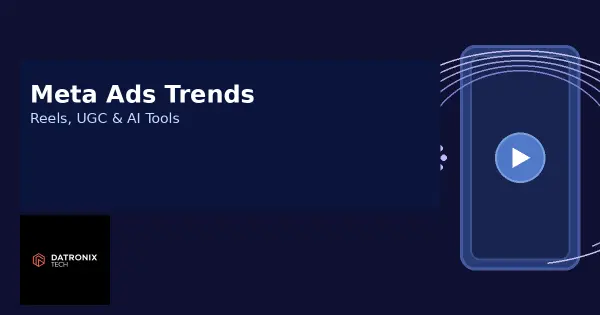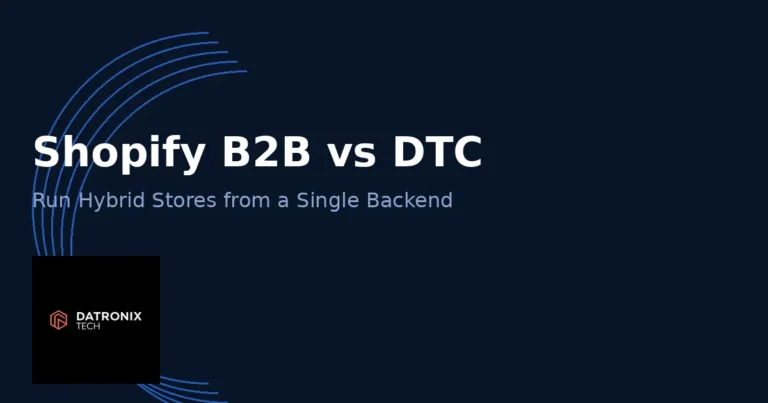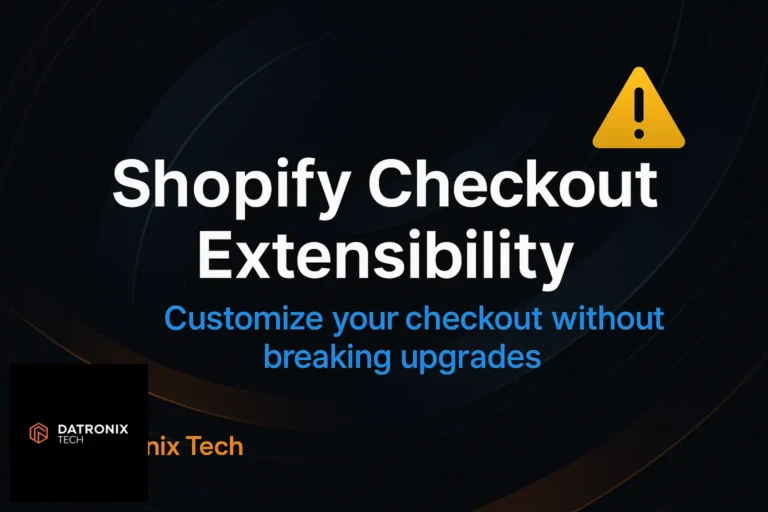The creative landscape on Meta’s advertising platforms is evolving at breakneck speed. In 2025 the company rolled out new meta ads creative trends format and AI‑powered tools that change how brands connect with audiences. Reels have become a primary surface for discovery, user‑generated content (UGC) has diversified far beyond talking‑head videos, and generative AI is starting to build campaigns end‑to‑end. This guide explores the most important trends – from Reels trending ads to Partnership Ads 2.0 and AI‑driven creative – and offers practical advice on how to leverage them for your business.
Reels trending ads
Meta’s latest inventory innovation allows advertisers to ride the wave of cultural moments. Reels trending ads place sponsored content next to the top five percent of creator‑made Reels that are trending each day. Advertisers can choose broad placement against the hottest Reels overall or pick specific categories such as fashion, beauty, sports, or pets. Early tests show these ads deliver about a twenty‑percent lift in unaided brand awareness, comparable to YouTube Select and ahead of TikTok’s Pulse program. For brands, this format offers a chance to appear beside content that users are already highly engaged with, making it ideal for upper‑funnel awareness campaigns.
To succeed with Reels trending ads:
Align with trending moments. Use social listening tools to monitor cultural events and trends, then create ads that tie into them naturally.
Use short, vertical video. Reels are built for 9:16 or square formats under 30 seconds. Edit your creative accordingly and include captions for sound‑off viewing.
Test categories. Try different categories in Ads Manager to see where your brand resonates best, and watch metrics like view‑through rate and lift in awareness.
Partnership Ads 2.0 and co‑branded content
Co‑branding isn’t new, but Partnership Ads 2.0 makes it easier for two brands or a brand and a creator to run a single ad with shared credit. The update lets each partner decide whether their name appears in the ad’s header, giving smaller brands the option to stay in the background or vice versa. It also simplifies media buying and reporting, so both parties can see performance data without sharing full account access.
When planning a partnership ad campaign:
Choose complementary partners. Look for collaborators whose audience, values and aesthetics align with yours.
Clarify visibility. Decide up front whether one or both names will appear in the ad header and how the creative will balance each brand.
Share insights. Exchange audience data (while respecting privacy laws) so the ad targets the right segments for both brands.
New UGC formats: beyond the talking head
User‑generated content has driven performance on Meta for years, but the classic talking‑head testimonial is losing effectiveness. Creators and advertisers are experimenting with alternative formats that feel more organic and less polished:
Text wall ads. These creatives look like social posts written by real people: a block of text over a minimal background with a strong narrative. They break many visual “rules” by featuring small, dense text, yet they perform because they mirror the kind of storytelling users already post themselves.
Infographic ads. Apps and SaaS products are using static or animated infographics to visualize benefits – like improved productivity or savings – directly in the ad. They give away value up front and encourage viewers to click through for more details.
Faceless AI content. Advances in generative AI tools allow advertisers to assemble b‑roll footage and synthetic voiceovers into “faceless” videos. These pieces can be created quickly and cheaply, making it easier to test multiple hooks without relying on influencers.
Authenticity remains key. Whichever format you choose, aim to make the creative feel like it came from a real user, even if AI is helping behind the scenes. Experiment with captions, text overlays and narrative hooks to see what resonates with your audience.
AI‑powered creative and full automation
Artificial intelligence is moving beyond audience targeting into the heart of creative production. In 2025 Meta rolled out several tools that automate different parts of the advertising workflow:
Dynamic content and placement. Meta’s AI can now assemble the optimal combination of images, videos and text for each user across Reels, Stories and Feed. It tests countless variations and learns which assets perform best, reducing manual creative rotation.
Advantage+ and Andromeda AI. These systems automatically test images, copy and audiences, then allocate budget to top performers. They can also trim the number of ad sets per campaign – Meta recommends just one to three – to let the algorithm optimize.
Full AI ad creation. An experimental feature lets advertisers upload a single product image and a budget; the AI writes the headline and copy, selects layouts, and chooses placements. For small businesses with limited resources, this offers a fast way to launch professional‑looking campaigns.
AI‑generated videos from images. Meta is testing a tool that turns static product photos into short, animated videos. It creates movement and context around the item, helping posts stand out in a feed dominated by video.
Beyond Meta’s native tools, third‑party platforms are emerging to generate ad assets. Brands like Midjourney and Flux AI offer still image generation; Runway and Kling AI can animate images; Veo 2 and Luma Dream Machine create video from text; Arcads AI and Poolday AI produce talking‑head videos. Working with these tools requires a “prompt creative” mindset: you must craft detailed prompts to get the desired output. Always review AI‑generated assets for brand consistency and compliance before publishing.
Video ads on Threads and emerging placements
Threads – Meta’s short‑text platform – is gradually becoming an advertising destination. Starting in 2025, Meta began testing autoplay video ads in both 16:9 and 1:1 formats in the Threads feed. Advertisers can repurpose creative from Facebook or Instagram or upload original clips. Although Threads’ audience skews younger and more conversational than Facebook’s, early adopters may benefit from lower ad costs and access to new inventory. As Threads matures and integrates more with Instagram, expect increased cross‑platform campaign tools.
In addition to Threads, Meta is expanding its creator marketplace. New filters help brands search for creators by audience demographics and engagement rate, while a Creator Marketplace API allows larger advertisers to automate influencer sourcing and campaign management. These developments signal that collaboration with creators will remain central to effective Meta advertising.
AR, 360° and interactive experiences
Immersive formats are no longer niche. Meta now supports augmented reality (AR) ads and 360° videos across more placements. Shoppers can virtually try on products like sunglasses or jewelry, explore 3D models of furniture in their homes, or walk through a digital showroom by moving their phone. These interactive experiences capture attention longer than static images and can reduce returns by helping customers understand products before purchasing. If your brand has physical products, consider investing in 3D models or AR filter production. Keep your AR ads simple and intuitive; the goal is to enhance, not complicate, the path to purchase.
Best practices for leveraging 2025’s creative trends
Adopting new formats and tools without a strategy can waste budget. To get the most from Meta’s 2025 creative updates:
Embrace vertical and square formats. Design creative specifically for Reels, Stories and square feeds; avoid repurposing widescreen video that feels out of place on mobile.
Mix evergreen and trending content. Balance timely Reels trending ads with evergreen assets to maintain consistent spend throughout the year.
Test AI‑generated creative against manual versions. Let algorithms explore variations but compare results to human‑designed ads to ensure quality and brand alignment.
Leverage co‑branded campaigns. Use Partnership Ads 2.0 to partner with complementary brands or creators; clearly agree on objectives, target audiences and measurement.
Use immersive formats thoughtfully. Deploy AR and 360° ads for products that benefit from visualization; include simple instructions and clear calls‑to‑action.
Measure what matters. Track metrics like unaided brand awareness, view‑through rate, cost per incremental reach and conversion lift. Use lift studies and Meta’s A/B testing tools to understand how each format impacts your funnel.
Frequently asked questions
What are Reels trending ads?
Reels trending ads are sponsored videos or images that appear next to the most popular Reels on Instagram and Facebook. They allow brands to tap into cultural moments and gain high visibility by aligning their ads with trending content.
How do Partnership Ads 2.0 differ from the original version?
Partnership Ads 2.0 give each partner control over whether their name appears in the ad header. They also streamline campaign setup and reporting, making it easier for both partners to manage and measure performance.
Are AI‑generated ads better than human‑made ones?
AI can generate and test many creative variations quickly, often finding combinations that perform well. However, human creativity is still essential for strategy, storytelling and brand consistency. The best results come from combining AI‑generated assets with human oversight and iterative testing.
Can small businesses use AR and 360° ads?
Yes. Many AR tools now let brands create simple try‑on filters or 3D models at lower cost. Start with one or two flagship products and test performance before scaling.
Conclusion
Meta’s 2025 creative updates signal a shift towards AI‑driven experimentation, immersive experiences and more flexible collaboration. Reels trending ads help brands ride cultural waves, Partnership Ads 2.0 simplify co‑branding, UGC evolves beyond talking heads, and AI tools automate everything from dynamic content assembly to full campaign creation. Meanwhile, video placements on Threads and AR/360° formats open fresh avenues for engagement. By staying agile, testing new formats and combining automation with human insight, your brand can stay ahead of the curve.
Ready to explore these new creative opportunities? Datronix Tech’s team can help you design, launch and optimize Meta campaigns that leverage Reels, UGC and AI to their fullest potential.





